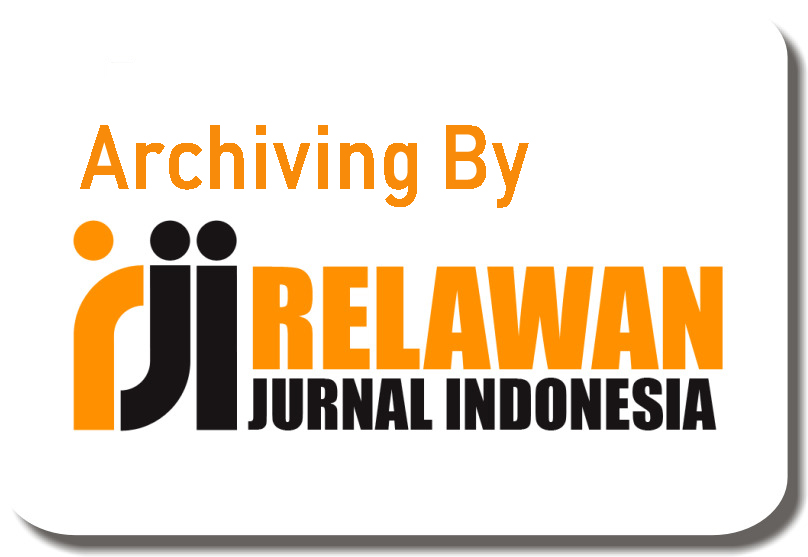The Effect of Augmented Reality Based Learning Strategy on EFL Students' Vocabulary Mastery
Abstract
This study aims to examine the effect of an Augmented Reality (AR)-based learning strategy on EFL students’ vocabulary mastery. Conducted at Thammasat Wittaya School, Thailand, the research involved 25 eighth-grade students in the 2024/2025 academic year, divided into experimental and control groups using a quasi-experimental design. The experimental group received vocabulary instruction through AR visuals and collaborative discussions, while the control group was taught using conventional methods. Data were collected using pre-tests and post-tests and analyzed using paired and independent t-tests. The findings revealed a significant improvement in vocabulary scores and student motivation in the experimental group compared to the control group (p < 0.001). These results suggest that integrating AR-based strategies in EFL classrooms can effectively enhance vocabulary acquisition and learner engagement.
Keywords
Full Text:
PDFReferences
Aslam, U., & Davis, L. (2024). Analyzing consumer expectations and experiences of Augmented Reality (AR) apps in the fashion retail sector. Journal of Retailing and Consumer Services, 76, 103577. https://doi.org/10.1016/j.jretconser.2023.103577
Chen, S.-Y., & Liu, S.-Y. (2020). Using augmented reality to experiment with elements in a chemistry course. Computers in Human Behavior, 111, 106418. https://doi.org/10.1016/j.chb.2020.106418
Fortuna, A., Waskito, Purwantono, Kurniawan, A., Andriani, W., & Alimin, M. (2023). Designing Learning Media Using Augmented Reality for Engineering Mechanics Course. Journal of Engineering Researcher and Lecturer, 2(1), 18–27. https://doi.org/10.58712/jerel.v2i1.20
Freeman Scott. (2020). Active learning narrows achievement gaps for underrepresented students in undergraduate science, technology, engineering, and math. 117(12). https://doi.org/10.1073/pnas.1916903117/-/DCSupplemental
Handayani, E. (2024). Penguasaan Kosa Kata Bahasa Inggris Peserta Didik Di Sekolah Dasar (Vol. 3, Issue 1).
Hernán, M. A., & Robins, J. M. (2016). Using Big Data to Emulate a Target Trial When a Randomized Trial Is Not Available: Table 1. American Journal of Epidemiology, 183(8), 758–764. https://doi.org/10.1093/aje/kwv254
Hillmayr, D., Ziernwald, L., Reinhold, F., Hofer, S. I., & Reiss, K. M. (2020). The potential of digital tools to enhance mathematics and science learning in secondary schools: A context-specific meta-analysis. Computers & Education, 153, 103897. https://doi.org/10.1016/j.compedu.2020.103897
Hung, H., & Yeh, H. (2023). Augmented‐reality‐enhanced game‐based learning in flipped English classrooms: Effects on students’ creative thinking and vocabulary acquisition. Journal of Computer Assisted Learning, 39(6), 1786–1800. https://doi.org/10.1111/jcal.12839
Josafat Gultom, R., Nuari Simarmata, J., Risnawati Purba, O., & Saragih, E. (2021). Teachers Strategies in Teaching English Vocabulary in Junior High School. Print) Journal of English Langaugeand Education, 7(1), 2022. https://doi.org/10.31004/jele.v7i1.182
M. Al Zahrani, S., & Chaudhary, A. (2022). Vocabulary Learning Strategies in ESP Context: Knowledge and Implication. Arab World English Journal, 13(1), 382–393. https://doi.org/10.24093/awej/vol13no1.25
Mardoyo, E., Lubis, M., & Bhaskoro, S. B. (2022). Evaluasi Virtual Reality Menggunakan Technology Acceptance Model (TAM) Terkait Dunia Metaverse. Jurnal Sistem Cerdas, 5(3), 182–194. https://doi.org/10.37396/jsc.v5i3.250
Mukhtar, S. A., & Fachrie, M. (2024). Aplikasi Pembelajaran Pengenalan Hewan Berbasis Augmented Reality Menggunakan Marker Based. Smart Comp: Jurnalnya Orang Pintar Komputer, 13(1). https://doi.org/10.30591/smartcomp.v13i1.6093
Nurhidayat, E., Mujiyanto, J., Yuliasri, I., & Hartono, R. (2023). Examining The Impact Of Technology Integration On Teachers’ Digital Literacy And Teachers’ Professional Competences In English As Foreign Language (Efl) Class. Journal of Namibian Studies, 33.
Özeren, S., & Top, E. (2023). The effects of Augmented Reality applications on the academic achievement and motivation of secondary school students. Malaysian Online Journal of Educational Technology, 11(1), 25–40. https://doi.org/10.52380/mojet.2023.11.1.425
Pateşan, M., Balagiu, A., & Zechia, D. (2019). Vocabulary Acquisition. International Conference KNOWLEDGE-BASED ORGANIZATION, 25(2), 300–304. https://doi.org/10.2478/kbo-2019-0098
Riar, M., Korbel, J. J., Xi, N., Zarnekow, R., & Hamari, J. (2021). The Use of Augmented Reality in Retail: A Review of Literature. https://hdl.handle.net/10125/70689
Rinaldi, R., Fahmi, K., & Masyitah, M. (2024). Tinjauan Literatur: Pemanfaatan Teknologi Augmented Reality sebagai Media Pembelajaran Interaktif Di Tingkat Sekolah Dasar. Likhitaprajna Jurnal Ilmiah Fakultas Keguruan Dan Ilmu Pendidikan Universitas Wisnuwardhana, 26(1), 20–28. https://doi.org/10.37303/likhitaprajna.v26i1.279
Sahin, D., & Yilmaz, R. M. (2020). The effect of Augmented Reality Technology on middle school students’ achievements and attitudes towards science education. Computers & Education, 144, 103710. https://doi.org/10.1016/j.compedu.2019.103710
Seidholfer Barbara. (2020). English as a lingua franca in the European context (Andy Kirkpatric, Ed.; 2nd Edition). Routledge.
Soto-Corominas, A., Paradis, J., Rusk, B. V., Marinova-Todd, S., & Zhang, X. (2020). ORAL LANGUAGE PROFILES OF ENGLISH SECOND LANGUAGE LEARNERS IN ADOLESCENCE. Studies in Second Language Acquisition, 42(4), 697–720. https://doi.org/10.1017/S0272263119000767
Susilo, A., Yang, P., & Qi, R. (2023). Developing critical intercultural awareness through video clip-assisted intercultural tasks. Higher Education Pedagogies, 8(1). https://doi.org/10.1080/23752696.2023.2235337
Wahyuanto, E., & Hastuti, S. (2024). Study of the Use of Augmented Reality Technology in Improving the Learning Experience in the Classroom Article Info. In West Science Social and Humanities Studies (Vol. 02, Issue 05).
Xue, Y. (2023). A Study on the Influence of Mother Tongue Transfer on English Pronunciation of Primary Students. Creative Education, 14(11), 2123–2130. https://doi.org/10.4236/ce.2023.1411135
DOI: https://doi.org/10.31004/jele.v10i4.1240
Refbacks
- There are currently no refbacks.
Copyright (c) 2025 Dinda Salsabilah Siregar, Diani Syahputri

This work is licensed under a Creative Commons Attribution-ShareAlike 4.0 International License.



